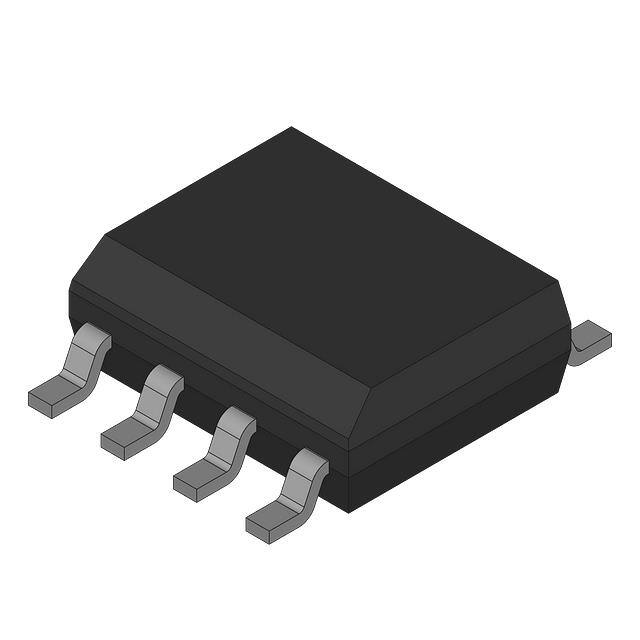STM32F407VGT6 Microcontroller
STM32F407VGT6 development board introduction
STM32F407VGT6 is a high-performance 32-bit microcontroller launched by STMicroelectronics. It is based on the ARM Cortex-M4 core and is widely used in embedded systems.TM32F407VGT6 is a powerful and flexible microcontroller suitable for a variety of embedded applications. Its high performance, rich peripheral interfaces and powerful processing capabilities make it an ideal choice for developing complex systems.
STM32F4 development board series programming
STM32F407VGT6 Application Areas
Embedded systems: widely used in robots, sensor networks and control systems.
Industrial automation: used for motion control, data acquisition and monitoring systems.
Consumer electronics: suitable for smart homes, home appliances and mobile devices.
Medical equipment: medical instruments for data acquisition and processing.
STM32F407VGT6 Main features
STM32F407VGT6 vs STM32F415VGT6TR vs STM32F415VGT6 vs STM32F405VGT6 Comparison
| Feature | STM32F407VGT6 | STM32F415VGT6TR | STM32F415VGT6 | STM32F405VGT6 |
|---|---|---|---|---|
| Image |  |  |  |  |
| Manufacturer | STMicroelectronics | STMicroelectronics | STMicroelectronics | STMicroelectronics |
| Core | ARM Cortex-M4 | ARM Cortex-M4 | ARM Cortex-M4 | ARM Cortex-M4 |
| Flash Memory | 512 KB | 512 KB | 512 KB | 512 KB |
| SRAM | 192 KB | 192 KB | 192 KB | 192 KB |
| Max Clock Speed | 168 MHz | 168 MHz | 168 MHz | 168 MHz |
| GPIO Pins | 82 pins (LQFP100) | 82 pins (LQFP100) | 82 pins (LQFP100) | 82 pins (LQFP100) |
| Package | LQFP100 (100 pins) | LQFP100 (100 pins) | LQFP100 (100 pins) | LQFP100 (100 pins) |
| Operating Voltage | 2.0 V to 3.6 V | 2.0 V to 3.6 V | 2.0 V to 3.6 V | 2.0 V to 3.6 V |
| USB | Full-Speed USB 2.0 (Device/Host/OTG) | Full-Speed USB 2.0 (Device/Host/OTG) | Full-Speed USB 2.0 (Device/Host/OTG) | Full-Speed USB 2.0 (Device/Host/OTG) |
| CAN | 2 CAN controllers (CAN 2.0B) | 2 CAN controllers (CAN 2.0B) | 2 CAN controllers (CAN 2.0B) | 2 CAN controllers (CAN 2.0B) |
| SPI | 3 SPI interfaces | 3 SPI interfaces | 3 SPI interfaces | 3 SPI interfaces |
| I2C | 2 I2C interfaces | 2 I2C interfaces | 2 I2C interfaces | 2 I2C interfaces |
| ADC | 3 × 12-bit ADCs | 3 × 12-bit ADCs | 3 × 12-bit ADCs | 3 × 12-bit ADCs |
| DAC | 2 × 12-bit DACs | 2 × 12-bit DACs | 2 × 12-bit DACs | 2 × 12-bit DACs |
| Timers | 14 timers (including advanced timers) | 14 timers (including advanced timers) | 14 timers (including advanced timers) | 14 timers (including advanced timers) |
| External Interrupts | Yes (external interrupt pins) | Yes (external interrupt pins) | Yes (external interrupt pins) | Yes (external interrupt pins) |
| DMA Channels | 16 DMA channels | 16 DMA channels | 16 DMA channels | 16 DMA channels |
| RTC | Yes (Real-Time Clock) | Yes (Real-Time Clock) | Yes (Real-Time Clock) | Yes (Real-Time Clock) |
| FPU (Floating-Point Unit) | Yes (single-precision) | Yes (single-precision) | Yes (single-precision) | Yes (single-precision) |
| Operating Temperature | -40°C to +85°C | -40°C to +85°C | -40°C to +85°C | -40°C to +85°C |
| Communication | UART, SPI, I2C, CAN, USB | UART, SPI, I2C, CAN, USB | UART, SPI, I2C, CAN, USB | UART, SPI, I2C, CAN, USB |
The STM32F407VGT6, STM32F415VGT6TR, STM32F415VGT6, and STM32F405VGT6 all offer similar processing power with an ARM Cortex-M4 core at 168 MHz, 512 KB of Flash, and 192 KB of SRAM, with significant peripheral support for communication and analog I/O. The choice between them primarily depends on packaging needs, cost considerations, and specific peripheral requirements for your application.
STM32F407VGT6 Development environment
STM32F407VGT6 is compatible with a variety of development environments and tools, including:
STM32CubeIDE: an integrated development environment provided by ST, supporting code writing, debugging and burning.
Keil MDK: a widely used ARM development environment suitable for professional development.
IAR Embedded Workbench: Efficient embedded development tools.
STM32F407VGT6 Datasheet PDF and Reference Manual
Download datasheets and manufacturer documentation for MCIMX6G2CVM05AB
STM32F407VGT6 similar or alternative microcontrollers
Depending on specific project requirements (such as memory capacity, processing power, and peripheral interfaces), you can choose a microcontroller similar to or alternative to the STM32F407VGT6.
Similar microcontrollers
Features: Higher flash memory (2 MB) and stronger graphics processing capabilities, suitable for applications that require higher performance and graphics display.
Applications: Advanced consumer electronics and industrial control.
STM32F407VG
Features: Similar to the STM32F407VGT6, but with a different package, suitable for applications that require fewer pins.
Applications: Embedded systems and sensor networks.
STM32F417VG
Features: Built-in stronger floating-point operations and DSP capabilities, suitable for audio and signal processing applications.
Applications: Audio processing and communication systems.
Alternative microcontrollers
NXP LPC1768
Features: Based on ARM Cortex-M3, with 512 KB flash memory and rich peripheral interfaces.
Applications: Industrial automation and embedded control.
Microchip PIC32MZ2048
Features: 32-bit architecture with 2 MB flash memory and DSP support, suitable for complex computing tasks.
Applications: Audio, video and network applications.
Texas Instruments TMS320F28069
Features: Focus on motor control and digital signal processing, with real-time control capabilities.
Applications: Industrial motor control and energy management.
FAQs for STM32F407VGT6
What types of projects can STM32F407VGT6 be used for?
STM32F407VGT6 is suitable for a variety of projects such as embedded systems, industrial automation, consumer electronics, robotics and medical equipment.
How to develop programs for STM32F407VGT6?
You can use STM32CubeIDE or other integrated development environments (such as Keil MDK or IAR Embedded Workbench) to write and debug code.
What is the maximum operating frequency of the STM32F407VGT6?
The maximum operating frequency of this microcontroller is 168 MHz.
What communication interfaces does the STM32F407VGT6 support?
It supports multiple interfaces such as USART, SPI, I²C, USB OTG, SDIO, etc., which are suitable for communicating with other devices.
How to configure the ADC of the STM32F407VGT6?
Use STM32CubeMX for graphical configuration, set the ADC channel, sampling time and other parameters, and then initialize the ADC in the code.
What is the power consumption of this microcontroller?
The STM32F407VGT6 supports multiple low-power modes, and the working state can be adjusted according to application requirements to optimize power consumption.
How to burn the program?
You can use the ST-LINK/V2 programmer to program via the SWD interface, or you can use STM32CubeIDE to upload code directly.
Can I use an external crystal?
Yes, the STM32F407VGT6 supports external crystals, and you can use an external clock source by configuring the clock system.
Is this microcontroller suitable for real-time control?
Due to its high performance and rich peripheral support, the STM32F407VGT6 is very suitable for real-time control applications.







